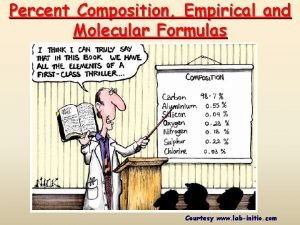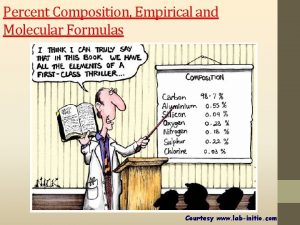Nylon 6 6 from HMDA and Adipic Acid

- Slides: 1

Nylon 6, 6 from HMDA and Adipic Acid HS&B Han Solo and the Boys Zachary Lee, Meghan Moore, Stephen Spiro, Edward Stenovitch, Department of Chemical Engineering, University of New Hampshire PROCESS FLOW DIAGRAM AND MATERIAL BALANCE INTRODUCTION OTHER CONSIDERATIONS • • Grass roots plant: 38. 6 MM kg/yr • Continuous production • Pellets for end-use in automotive textiles • 3% market growth per year 20122020 • 100% and 67% analyses completed • • 100% Capacity Stream Number Temperature (°C) Pressure (barg) Vapor Fraction Mass Flow Rate (kg/hr) Components (kg/hr) HMDA Deionized Water Adipic Acid Nitrogen Nylon Salt Water Nylon 6, 6 TOTAL Global Nylon monofilament market volume by product, 2012 -2020 (kilotons) SAFETY CONSIDERATIONS 1 2 3 4 5 6 7 8 9 20 0 0 2359. 6 20 0. 2 0 3857. 5 20 0. 1 0 1708. 6 20 0. 1 0 2169. 7 20 0 0 2967. 5 20 0 0 4068. 2 20 0 0 5116. 4 20 18. 1 1 25. 9 10 150 3. 75 1 10. 1 2359. 6 0. 0 0. 0 3857. 5 0. 0 0. 0 3857. 5 0. 0 1708. 6 0. 0 0. 0 1708. 6 0. 0 2148. 9 0. 0 20. 8 0. 0 2169. 7 0. 0 2967. 5 0. 0 2967. 5 2359. 6 1708. 6 0. 0 0. 0 4068. 2 0. 0 2148. 9 2967. 5 0. 0 5116. 4 0. 0 0. 0 25. 9 0. 0 0. 0 10. 1 Guide word No No More Less Deviation No steam delivered to reactor No nitrogen blanketing More water in solution More steam entering the jacket Less solution leaving the reactor Cause Steam supply pipe rupture Valve failure Temperature control loop failure L-151 A/B failure Consequence Solution will not drive off water and polymerization will not occur Action Check to make sure flow rates operate at optimum conditions Air can enter the Maintenance system which can check by process contaminate the engineers on salt solution valve controllers Purity of Nylon 6, 6 decreases Thermal degradation of monomers Backup and overflow in R-140 Maintenance check by process engineers on valve controllers Maintenance check by process engineers on control loops Maintain spare pump (L-151 A/B) 12 150 3. 75 0 9184. 6 13 20 0. 1 1 2. 1 14 150 0 1 0. 0 15 150 0 0 6126. 9 16 20 18. 1 1 7. 4 17 210 18 1 728. 2 18 210 18 0 5406. 1 19 20 18. 1 1 6. 2 20 230 18 0 575. 2 21 230 18 1 4837. 1 22 20 0. 1 1 0. 1 23 300 0 1 148. 2 24 185 0 1 4521. 4 25 300 0 0 4688. 5 26 270 0. 5 0 4688. 5 27 265 0 0 4688. 5 28 100 0 0 4688. 5 0. 0 0. 0 10. 1 0. 0 4595. 2 4589. 4 0. 0 9184. 6 0. 0 0. 0 2. 1 0. 0 3057. 7 0. 0 3059. 8 0. 0 1471. 7 1531. 7 3123. 5 6126. 9 0. 0 0. 0 7. 4 0. 0 720. 8 0. 0 728. 2 0. 0 724. 8 810. 9 3870. 4 5406. 1 0. 0 0. 0 6. 2 0. 0 569. 0 0. 0 575. 2 0. 0 158. 9 241. 9 4436. 3 4837. 1 0. 0 0. 1 0. 0 148. 2 0. 0 25. 9 0. 0 4495. 6 0. 0 4521. 4 0. 0 0. 0 93. 8 4594. 7 4688. 5 ECONOMIC ANALYSIS • HMDA identified as most hazardous material • Process hazards associated with high temperatures and pressures. • Parallel relief valve with spring and rupture disk 45 11 20 3. 85 1 10. 1 $33 381 $679 192 $52 195 $341 296 $149 340 $457 070 $3 373 277 $210 082 $205 340 $280 902 $10 229 Crushers, Mills, and Grinders Separators Mixers and Agitators Process Vessels Heat Exchangers Conveyors Reactors Size Enlargement Storage Tanks Pumps Compressors Start-up procedure • Substitution of air for a nitrogen atmosphere • Leak testing Quality control • Equimolar addition of HMDA and Adipic Acid • Monitor temperatures and pressures to limit thermal degradation Plant layout • Pumps should be isolated • Explosion barricades around reactors CONCLUSIONS AND RECOMMENDATIONS Profitability Measure Value Undiscounted Net Present Value (NPVi=0) $59. 8 MM Discounted Net Present Value (NPVi=10%) $30. 5 MM Payback Period (PBP) 1. 2 years Net Payout Time (NPT) 1. 4 years Discounted Break Even Point (DBEP) 3. 4 years Discounted Cash Flow Rate of Return (DCFRR) 65. 1 % After-Tax Return Rate 114 % • Class 4 Economic Analysis • Selling Price: $3. 13/kg • Total Capital Investment: $8. 3 MM • Total Expenses: $111 MM • Revenue from Sales: $121 MM • Net Annual Profit After Taxes: $6. 3 MM • Recommend that proposed design be carried out for further analysis and eventual construction • Continuous process has higher efficiency and is inherently safer • Continuous production will run for 350 days/year • 100 % capacity dedicated to Nylon 6, 6 pellet production • Use of high quality raw materials to ensure a highquality product • Nylon 6, 6 pellets will be sold for $3. 13 per kg ACKNOWLEDGEMENTS We would like to thank the force for always keeping us on track and our professors, TA, and the UNH Chemical Engineering Department.

